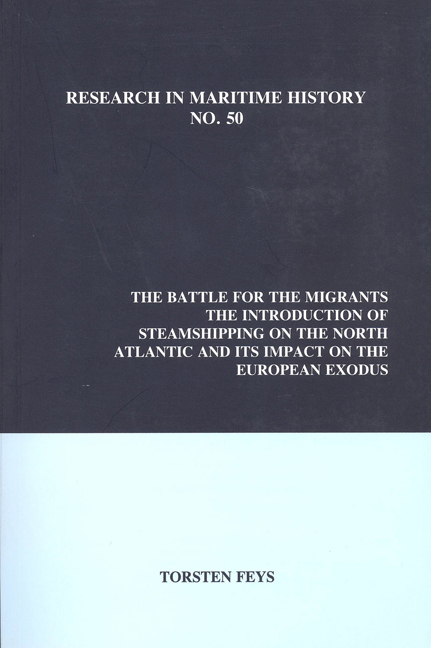 The Battle for the Migrants
The Battle for the Migrants from Part II - The Impact of Steam Shipping on Transatlantic Migration, 1870-1914
During the Civil War, the federal government intervened directly in immigration matters for the first time. Once the Supreme Court moved all migration issues from the state to the federal level in the mid-1870s, the pressures on Congress to legislate grew. A reluctance to do so because of concerns over trade agreements and international relations based on reciprocity eventually ebbed as both in Europe and the US the conviction grew that it was a nation's right to control migration to protect its citizens and institutions and to preserve its sovereignty. The question quickly moved from whether to exclude certain people to how and which ones. In this debate, which became known for its strange coalitions, two main pressure groups advocated restrictions. First, there were the labour unions which claimed that employers used immigrants as strikebreakers and to keep down wages. Second, new nativist movements, particularly in California and Massachusetts, claimed that the ethnic composition of the new migrant stream, which consisted mainly of eastern and southern Europeans and Chinese, threatened the “purity” of the “American race.” On the other side of the spectrum, various ethnic and religious communities defended liberal immigration policies that allowed co-ethnics and co-religionists to follow in their footsteps, while business groups were most often interested in increasing the size of the pool from which to recruit workers. A much neglected group in the debate were the shipping companies that earned the greatest part of their revenues from the transport of migrants. Aristide Zolberg and Maldwyn Jones acknowledged the importance of the shipping lobby in shaping American laws regulating migrant transport, but neither they nor any other scholar has paid much attention to their role in opposing immigration restrictions.
This chapter tries to shed more light on the position of the shipping lobby within the constellation of interest groups advocating liberal immigration policies. With the federalization of the issue and the growing reluctance of diplomats or other government officials to intervene on their behalf, shipping companies revised their strategies to focus more intently on Washington. The strategies will be discussed, while the role of shipping companies in shaping (and sometimes circumventing) immigration laws will be touched upon here and analyzed more thoroughly in the next chapter. The aim is to determine the lengths to which shipping companies went to ensure the right of entry of as many of their passengers as possible.
To save this book to your Kindle, first ensure [email protected] is added to your Approved Personal Document E-mail List under your Personal Document Settings on the Manage Your Content and Devices page of your Amazon account. Then enter the ‘name’ part of your Kindle email address below. Find out more about saving to your Kindle.
Note you can select to save to either the @free.kindle.com or @kindle.com variations. ‘@free.kindle.com’ emails are free but can only be saved to your device when it is connected to wi-fi. ‘@kindle.com’ emails can be delivered even when you are not connected to wi-fi, but note that service fees apply.
Find out more about the Kindle Personal Document Service.
To save content items to your account, please confirm that you agree to abide by our usage policies. If this is the first time you use this feature, you will be asked to authorise Cambridge Core to connect with your account. Find out more about saving content to Dropbox.
To save content items to your account, please confirm that you agree to abide by our usage policies. If this is the first time you use this feature, you will be asked to authorise Cambridge Core to connect with your account. Find out more about saving content to Google Drive.